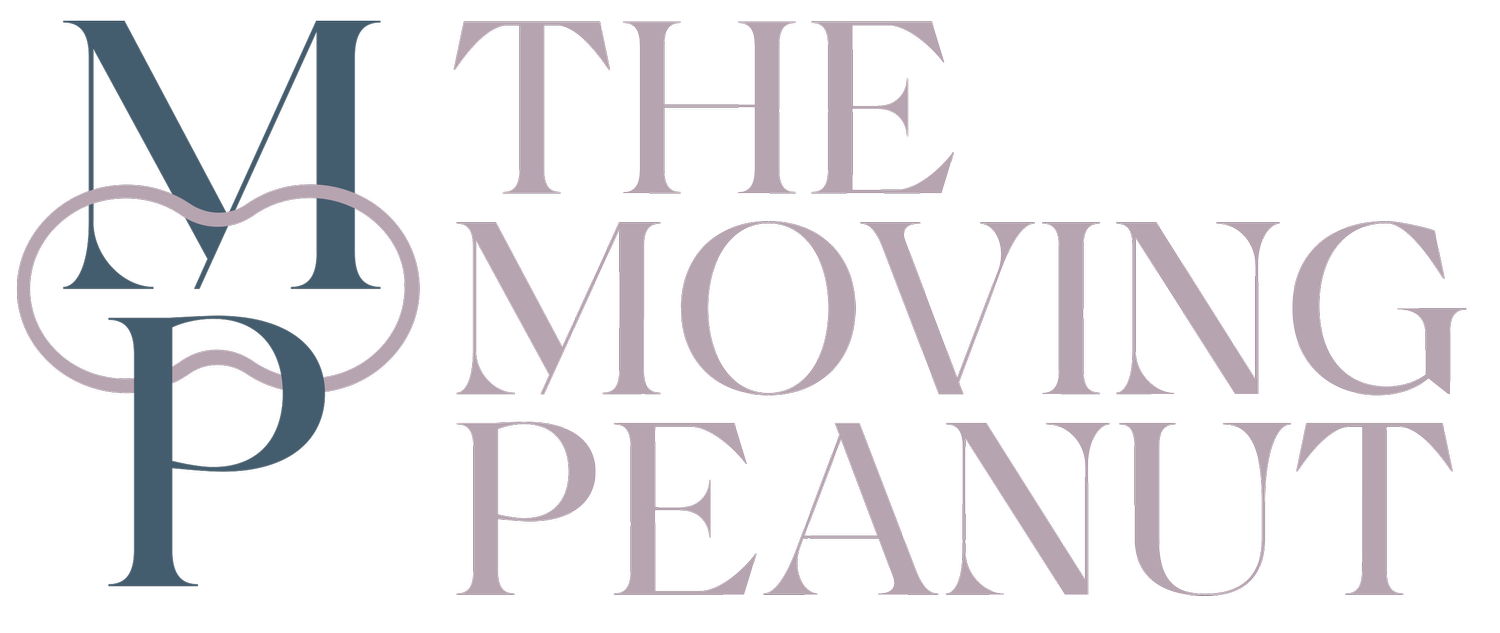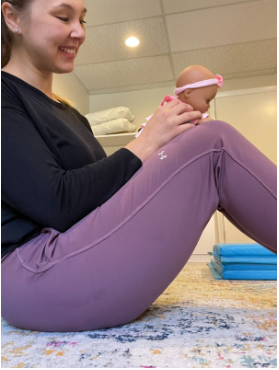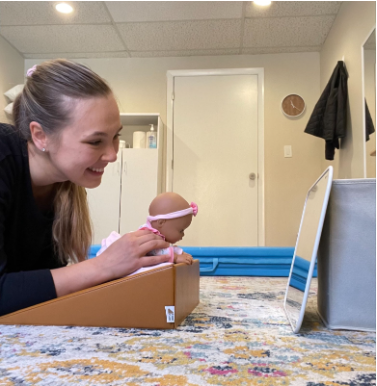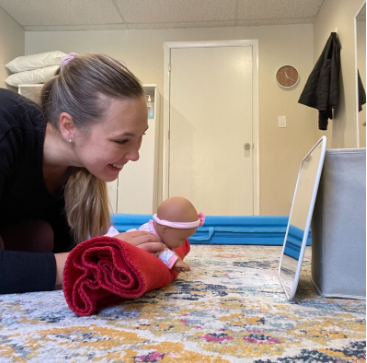Is Tummy Time Actually Important?
By Dr. Allison Chisholm, PT, DPT
You’ve been seeing it all over social media and it’s been talked about by pediatric providers worldwide: for the love of all that is holy, make sure you get your baby on their dang bellies for some tummy time. In reality, yes, it’s important, but it is not the end all be all by any means. Let me explain.
What, Exactly, is Tummy Time?
Tummy time has been a common phrase you may have heard as a caregiver or provider in the baby world the last several years. Why is this? It all started when the Back to Sleep Campaign - now called Safe to Sleep - started in 1994, due to years of observations and studies noticing that there was an increased link between babies sleeping on their bellies and Sudden Infant Death Syndrome (SIDS).1
While the incidence of SIDS decreased immensely, the incidence of plagiocephaly - or head flattening - increased by 40%. Additionally, some studies conducted in the late ‘90s concluded that the achievement of gross motor milestones slowed down due to babies now being placed on their backs more than their bellies; hence, the recommendation for isolated tummy time was made to parents of infants ages 0-6 months.2
By definition, “tummy time” is when parents have their babies spend supervised and focused time on their bellies while awake2, since the strengthening derived from this position assists in achieving higher level milestones, including sitting, rolling, crawling on hands and knees, pull to stand transitions, and, eventually, walking.3
Why is Tummy Time Important?
Well, there have to be benefits to this position if there’s such a craze around it, right? Find those listed below:
1. Motor Development2
This one is a biggie in many of the research studies out there: does tummy time make a difference in the development of gross motor skills?
The answer?
Yes, yes it does.
To provide a general summary of what the research shows, babies who spend more time on their bellies on a daily basis while awake tend to achieve higher level gross motor skills and developmental milestones including rolling, independent sitting, belly brawling, and crawling on hands and knees earlier and easier than similarly-aged babies who may not have spent much time on their bellies. One study even found that this benefit was consistently seen until the age of three!
2. Head Shape2
Two key terms to be aware of here are plagiocephaly and brachycephaly. Plagiocephaly refers to flattening on one side of the back of the cranium, while brachycephaly refers to more of a straight-on flattening directly on the back of the head.
Overall, the research involving tummy time and how it relates to head shape states that 1) more time spent on the belly decreases instances of brachycephaly and 2) less tummy time does equate to a greater risk of plagiocephaly by the time a baby reaches seven weeks old.
3. Social communication2
For the first year of life, increased tummy time was shown to significantly improve communication, although this connection was not shown after that first year of life.
4. Cognition2
Some evidence shows that babies who are moving on their bellies by six months of age have better cognitive - or problem-solving - skills, while other evidence shows no association at all between tummy time and cognition, so I guess this one is a toss-up.
5. BMI2
Honestly, I could give two flying cannolis about this one since BMI is not a good determinant of overall health, but basically, awake and alert babies who spend more time on their bellies at two months old showed a lower BMI at 4 months old, which this study is also correlating to a significant difference in earlier achievement of the “prone”, or belly down milestones listed above (army crawling, pivoting on the belly, crawling on hands and knees, and other transitions).
Cool.
I’m listing this one since it was mentioned, but if you are a parent who always has had troubling thoughts around your body size, ignore this one. Also, it’s only one study with more research needing to be done to really conclude that tummy time truly has an effect on BMI.
As a pediatric physical therapist and an advocate in the body positive space, if your beautiful, large or small baby is rolling or not rolling at the expected time, that is A-OK. Talk to a local pediatric PT you trust if you feel as though you need some help with your little one meeting these more advanced milestones.
Okay, hopping off my soapbox now :)
6. Feeding, Tongue Movement, Digestion, Oh My!
Although not supported by the literature, due to tummy time strengthening the neck and back muscles and how the weight of gravity plays a role on the tongue in this position, there are also claims that tummy time helps with feeding, tongue movement and function, and overall digestion.
While I do agree that this strengthening is necessary, I would also argue that practicing only tummy time can over-strengthen the back muscles, creating an imbalance in back muscle and abdominal muscle strength, leading to dysfunctional feeding, tongue function, and digestion.
As early motor development researcher Dr. Jill Hitchcock, PhD states in a New York Times article discussing tummy time, “What’s most important is that kids be in a variety of positions during the day”5 and, as a pediatric physical therapist, I 100% agree.
How Long Should My Baby Be Doing Tummy Time Each Day?
Well, the American Academy of Pediatrics recommends 2-3 times per day for 3-5 minutes at a time when you first bring your baby home from the hospital, with the goal being to work up to 15-30 minutes per day by the time your little one is 7 weeks old.4
But then you look at the World Health Organization, who says that 30 minutes per day is what you want to aim for from the get-go.2
And yet, some studies say that spending MORE than 30 minutes per day in tummy time is what leads to a significantly greater ability for babies to lift up their head on their bellies, fully extend their arms and legs in this position, and overall have better weight bearing and alignment of their arms and legs in this position.2
My take?
Focus on quality vs quantity.
I see many, many babies who absolutely despise tummy time. As a pediatric PT, my preference is that tummy time is an enjoyable experience for you and for your baby, whether you’re practicing on your chest, on a Boppy, on a ball, or on the floor, otherwise your little is not actually getting the benefits discussed above.
And whether it’s 10 seconds, 3 minutes, or 10 minutes, any amount you’re able to do is perfect in my book.*
If you’re someone who thrives off of the numerical goal, aim for 30-60 seconds of cry-free tummy time from day one a few times a day (and yes, I count tummy time on your chest for this!)
Eventually you can work up to those 3-10 minute spans a few times per day, but start off where you are at mentally and where your baby is at physically.
If you’re curious what age-appropriate tummy time may look like for your baby, check out this great blog post!
Techniques for Improving Tummy Time
1. On You!**
a.) Chest: Get cozy with your baby by reclining back on the couch and laying your baby on their bellies straight on your chest. This is a great option for newborns both asleep and awake; don’t be surprised if they start off being curled with their legs up, the back rounded, and their arms tucked in close to their bodies while practicing tummy time in those early days!
b.) Bent Legs: Sit on the floor and bend your knees up slightly, so your legs are together forming an upside-down V. Place your baby on the tops of your thighs with their elbows tucked underneath their shoulders close to your knees, so they are inclined; you can play with the force of gravity and, in turn, the difficulty of this position by lowering your legs to make baby more horizontal and, hence, increasing the difficulty, or bringing your knees up higher to get baby into a more vertical position, which decreases the difficulty.
c.) Lap: While sitting on the couch with your back upright and your hips and knees in a 90/90 position, place your baby across your lap, letting their cheek rest down on your thigh, or helping them get their elbows underneath their shoulders so they can lift their head up and look around in this position.
d.) Arms: If your baby is 0-3 months old, hold them on one of your forearms tucked close to your body, bringing your arm away from your body as your baby gets stronger and can start lifting up their head. When your little one is >3 months old, place one forearm perpendicular to your baby’s body underneath their chest and the other underneath their hips in a “Superman” position to practice strengthening the neck, back, and leg muscles against gravity.
2. On a Ball
Baby is placed on their belly on the yoga or therapy ball, assisting them to bring their arms underneath their shoulders in this position; you can further stabilize your baby on the ball by placing your chest on your little’s bum.
Something to note here is that as you lean your baby forward on the ball to make them more horizontal, the force of gravity will be greater in this position, causing increased difficulty for your little; the further you back you roll them on the ball so they are in a more vertical position, the easier the position will be since the force of gravity isn’t weighing on them as much!
Another pro tip in this position is that, if you own a tall standing or full length mirror, position your little one on the ball in front of the mirror with you supporting them on the ball from behind, that way they can still see you while getting some tummy time in on the ball.
3. On a Boppy
Place your little one on the Boppy on the edge of the couch or on the floor, helping them bring their elbows underneath their shoulders while resting on the Boppy to allow for further extension of the trunk and neck.
To improve your little one’s tolerance in this position, lay on the ground in front of them while on the Boppy, or sit on the floor in front of the couch if the Boppy is positioned on the edge with the baby facing outwards. Sing to them, talk to them, make funny faces… All of these things will increase the duration of time your little one is tolerating this position, in addition to being a great way to bond with your baby while on their bellies.
4. On a Wedge**
Place your little one on the wedge on the edge of the couch or on the floor, helping them bring their elbows underneath their shoulders to allow for further extension of the trunk and neck.
Same as above, getting on the floor with your little one, or getting in front of them while they’re on the wedge on the couch will help keep them entertained in this position.
5. On the Floor (with Modifications!)
There are a couple ways you can modify the floor itself to make tummy time more enjoyable, since, eventually, tummy time directly on the floor will be important for your little one to be able to do!
Place your little one on the floor with one of those full length mirrors you can buy for $7 at Walmart or Target horizontally leaning up against the wall or a piece of furniture so your baby can look up and see themselves on the floor, encouraging further neck extension.
Place a rolled up receiving blanket underneath your little’s armpits while on the floor with contrast cards or a small mirror set up in front of them to stay motivated in this position.
Purchase an Inflatable Water Tummy Time Mat for your baby to put their elbows on while on the floor for tummy time.
As I’m finishing up this blog post, many of the studies looked at are considered low-level evidence due to the majority of the studies relying on parent reports and surveys, which leads to higher levels of bias.
This is all to say, if you’re in survival mode and tummy time is hard to come by with your little one, prioritize your mental health first and foremost.
Making sure your baby is clean, fed, and loved is what matters the most.
And if you need help working on tummy time with your little one, make sure to reach out to a local pediatric physical therapist, or schedule a virtual wellness consult through The Moving Peanut.
*Within reason with this one. If you’re having your baby spend 10 seconds in tummy time on the floor and then the rest of the time, they’re in a swing or a bouncer, then your little one isn’t going to get the benefits of this important position!
**Especially in the first 3 months, if your baby is not tolerating being on the floor right now, it is 100% OK to focus on practicing different positions on you, especially tummy time. Again, we want tummy time to be enjoyable and productive for both you and for your baby!
***The one linked is a great option, since it’s specifically made for tummy time, easy to clean, and made by a physical therapist!
References
Hewitt L, Kerr E, Stanley RM, et al. Tummy Time and Infant Health Outcomes: A Systematic Review. Pediatrics. 2020;145(6):e20192168
Wen LM, Baur LA, Simpson JM, Rissel C, Flood VM. Effectiveness of an Early Intervention on Infant Feeding Practices and “Tummy Time”: A Randomized Controlled Trial. Arch Pediatr Adolesc Med. 2011;165(8):701–707. doi:10.1001/archpediatrics.2011.115
https://www.nytimes.com/2020/04/13/parenting/baby/tummy-time.html









